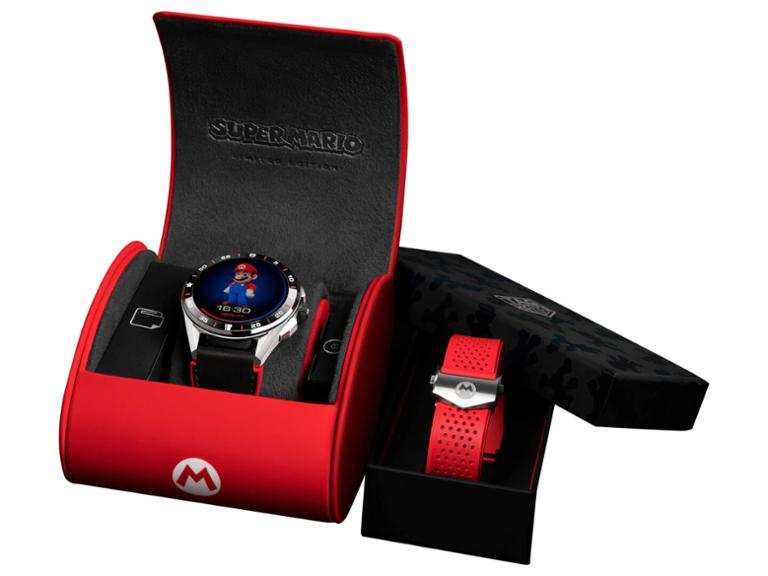It’s the weekend! Before you shut down for some much-needed relaxation, let’s revisit some of the biggest tech stories from the week that you might have missed, including the unveiling of Windows 365, a Super Mario-themed smartwatch, and the deepfaking of a culinary icon.
Super Mario Smartwatch
How much do you love Super Mario? If you answered, “Enough to plunk down $2,000 for a Super Mario-themed smartwatch,” TAG Heuer has just the thing for you. The TAG Heuer Connected X Super Mario Limited Edition timepiecehas a steel body (engraved in places with the distinctive ‘M’ from Mario’s cap), a sapphire touchscreen, and runs Wear OS. As you might expect, the digital watch-faces are all Mario-themed.
Before you shell out that $2,000, though, be warned: By smartwatch standards, Wear OS is an old and outdated operating system. Samsung and Google are currently working on a successor OS, potentially dubbed “Wear,” that will replace the current Wear OS. It’s a big question whether current Wear OS devices will update to this new operating system once it rolls out, but if they can’t, then your Super Mario smartwatch might become a very expensive paperweight before too long.
If you have a lot of money burning in your pocket, and an unhealthy obsession with Super Mario, also consider that really old Nintendo game cartridges featuring the character are selling for as much as a New York City apartment.
Windows 365
Perhaps it was inevitable: Microsoft is releasing a cloud-based version of Windows, dubbed “Windows 365.” In theory, that will allow anyone to access the operating system and everything on it, including data and apps, from pretty much anywhere with a web connection.
“The Windows experience is consistent, no matter the device,” reads Microsoft’s statement on the matter. “You can pick up right where you left off, because the state of your Cloud PC remains the same, even when you switch devices. You can get the same work done on a laptop in a hotel room, a tablet from their car between appointments, or your desktop while you’re in the office. Seasonal workers also can ramp on and off according to the needs of the business, allowing the organization to scale for busy periods without the complicated logistical and security challenges of issuing new hardware.”
For years, Microsoft has also been forced to deal with millions of Windows users who refused to upgrade from aging OS versions—Windows XP hung around forever, as did Windows 7. By transitioning Windows to the cloud, Microsoft likely hopes it can persuade all those users to give up their aging, increasingly unsecure Windows versions in favor of something that can be continuously updated.
Faking Bourdain
Deepfakes, or the use of machine learning and artificial intelligence (A.I.) to create synthetic versions of folks’ faces and voices, are rapidly becoming one of the biggest ethical issues in tech. There are widespread concerns that bad actors will use deepfakes to harass and embarrass people, or even commit fraud. Meanwhile, celebrities are increasingly worried about their digital likeness being used without their permission.
Into this heated debate wades the new documentary about the late chef-turned-documentarian Anthony Bourdain. Titled “Roadrunner,” it’s not the sort of thing that would ordinarily spark concerns over the use of technology. However, director Morgan Neville has admitted that he used A.I. to create a synthetic clip of Bourdain’s voice reading an email aloud.
“We can have a documentary-ethics panel about it later,” Neville reportedly told the New Yorker. But it also brings up some pressing issues right now: If A.I. is sophisticated enough to replicate someone’s voice with reasonable accuracy, should we place more controls on how this technology is used? Did Bourdain’s estate sign off on this?
That’s it, everyone! Have a great weekend!
